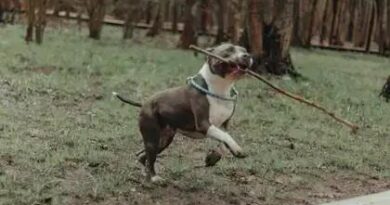O que é Padrão
What is a Standard?
The term “standard” in the context of dog breeds refers to a set of guidelines and characteristics that define the ideal appearance, behavior, and temperament of a specific breed. These standards are established by kennel clubs and breed organizations to ensure consistency and quality among dogs of the same breed. Understanding what a standard entails is crucial for breeders, judges, and dog enthusiasts alike, as it helps maintain the integrity of the breed.
Importance of Breed Standards
Breed standards serve as a blueprint for breeders to follow when producing puppies. They outline the desired traits, including size, coat type, color, and specific behavioral characteristics. By adhering to these standards, breeders can help ensure that their dogs not only meet the expectations of the breed but also possess the qualities that make them suitable companions. This is particularly important in competitive dog shows, where adherence to the standard can determine success.
Components of a Breed Standard
A breed standard typically includes several key components: general appearance, size, coat, color, and temperament. Each of these elements plays a vital role in defining what makes a breed unique. For instance, the standard for a Labrador Retriever specifies a strong, athletic build, a short, water-resistant coat, and a friendly disposition. These details help potential owners understand what to expect from the breed and assist breeders in making informed decisions.
How Standards are Established
Standards are established through a collaborative process involving breed experts, veterinarians, and experienced breeders. Organizations like the American Kennel Club (AKC) and The Kennel Club (UK) play a significant role in this process. They gather input from various stakeholders and conduct extensive research to create a comprehensive standard that reflects the breed’s history and purpose. This process ensures that the standards are not only accurate but also relevant to the breed’s future.
Variations in Standards
It’s important to note that breed standards can vary between different kennel clubs and countries. For example, the standard for a German Shepherd may differ slightly between the AKC and the Fédération Cynologique Internationale (FCI). These variations can be due to regional preferences, historical influences, or differing interpretations of the breed’s characteristics. As a result, dog owners and breeders should be aware of the specific standard that applies to their region.
Impact of Standards on Dog Breeding
Standards have a profound impact on dog breeding practices. They guide breeders in selecting breeding pairs that will produce puppies that conform to the ideal traits outlined in the standard. This selective breeding process helps to enhance desirable qualities while minimizing genetic disorders. However, it also raises ethical considerations, as some breeders may prioritize appearance over health, leading to potential welfare issues.
Standards and Dog Shows
In the world of dog shows, breed standards are paramount. Judges evaluate dogs based on how closely they adhere to the established standard. This evaluation includes assessing physical traits, movement, and temperament. Winning a dog show often hinges on a dog’s ability to meet or exceed the expectations set forth in the breed standard, making it a critical aspect of competitive dog ownership.
Challenges with Breed Standards
While breed standards are essential for maintaining breed integrity, they can also present challenges. Some standards may inadvertently promote traits that are not conducive to the dog’s health or well-being. For instance, extreme physical characteristics, such as overly flat faces in certain breeds, can lead to health issues. As awareness of these concerns grows, many organizations are reevaluating their standards to prioritize the health and welfare of dogs.
The Future of Breed Standards
The future of breed standards is likely to evolve as society’s understanding of canine health and genetics advances. There is a growing movement towards creating standards that prioritize health, temperament, and adaptability over purely aesthetic traits. This shift aims to produce dogs that not only conform to breed ideals but also lead happy, healthy lives as companions. As this trend continues, it will be interesting to see how breed standards adapt to reflect these values.



